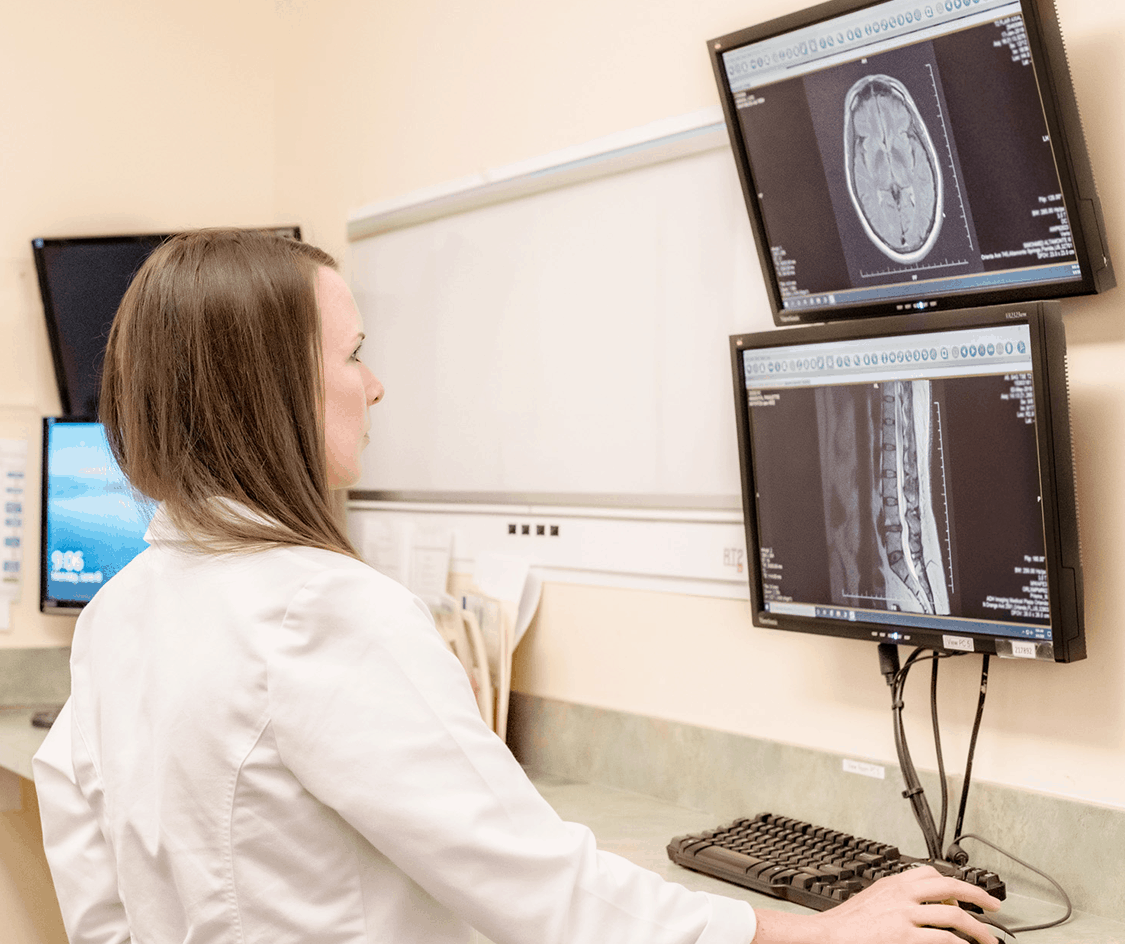One of the common treatments for a brain tumor or other conditions that affect the brain is minimally invasive brain surgery. Each year, nearly 80,000 people are diagnosed with a brain tumor and more than 700,000 are living with the disease.
This surgery can often remove tumors or treat other conditions such as stroke or epilepsy. It’s just one tool that neurosurgeons use to repair the brain and treat a patient.
What Conditions Require Minimally Invasive Brain Surgery?
 The brain is the most critical organ in the body, directing and regulating all bodily functions. If the brain tissue is altered through a tumor or swelling, the blood flow is hampered by a hemorrhage or bruising (hematoma), or if the cerebrospinal fluid is affected by an infection or other illness, minimally invasive brain surgery may be an option.
The brain is the most critical organ in the body, directing and regulating all bodily functions. If the brain tissue is altered through a tumor or swelling, the blood flow is hampered by a hemorrhage or bruising (hematoma), or if the cerebrospinal fluid is affected by an infection or other illness, minimally invasive brain surgery may be an option.
While a stroke or epilepsy could require this type of surgery, by far, the most common type performed every year in the U.S. is to remove a brain tumor. There are currently 120 different types of brain tumors. These masses are basically an abnormal growth of cells that can be cancerous or benign. For patients diagnosed with a brain tumor, surgery is usually the first and primary option to consider. However, with the technology and medical advancements that have led us to minimally invasive procedures, the patient may not even need an incision in the skull to perform the procedure.
Modern surgical techniques can use the body’s natural openings, such as the mouth or nostrils, to reach certain types of tumors. In other instances, small incisions about the side of a keyhole can be made behind the ear or in the natural eyelid crease to reach the tumor.
What is Minimally Invasive Brain Surgery?
Minimally invasive brain surgery is now possible for many types of tumors within the human skull. The techniques have been successfully used for years in several other types of procedures such as knee replacement. With minimally invasive brain surgery, the process seeks to precisely and safely remove tumors or correct issues in the brain in a way that minimizes damage to the surrounding tissue. Many of these surgeries can be performed through a small craniotomy procedure that opens a section of the bony skull or through the nostrils.
While any surgery on the brain is delicate, minimally invasive approaches reduce the chance of complications in the patient. These surgeries are technically demanding and not appropriate for all types of tumors or other illnesses that affect the brain.
There are several types of of the surgery available today. They include:
- Microcraniotomy, which creates a narrow opening in the skull to reach tumors deep under the surface of the brain
- Neuroendoscopy procedures use specialized endoscopes with a flexible video camera to see inside the brain for a surgical procedure
 Not all neurological conditions affecting the brain can leverage minimally invasive surgical techniques. However, these procedures can be used to potentially treat:
Not all neurological conditions affecting the brain can leverage minimally invasive surgical techniques. However, these procedures can be used to potentially treat:
- Blocked arteries
- Brain cysts or tumors
- Brain aneurysms
- Cushing’s Disease
- Epilepsy
- Hydrocephalus
- Parkinson’s Disease
- Pituitary tumors
- Stroke
Minimally invasive brain surgeries can perform biopsies that take a small sample of tissue from inside the skull to diagnose disease. These types of surgeries can insert a shunt to remove excess fluid from the brain. They can also debulk, or reduce the size of a brain tumor or remove it completely.
Like many other types of surgeries, minimally invasive brain surgeries seek to treat the patient with the smallest incision possible to achieve success. An increasing number of patients today can undergo minimally invasive treatments for aneurysms, brain tumors, epilepsy, Parkinson’s, and epilepsy through small keyhole-sized incisions in the skull, nose, or eyelid. These treatments are often preceded or followed by radiation therapy that doesn’t require surgery at all.
In the case of epilepsy, new procedures called deep brain stimulation, implant a tiny electronic device that senses signals to the portions of the brain responsible for the body’s movement. In the same way that a pacemaker can regulate the beat of a person’s heart, a deep brain stimulator can regulate brain activity. This type of surgery is also helpful for Parkinson’s patients.
Is Minimally Invasive Brain Surgery Better Than Traditional Surgery?
Yes. In traditional brain surgeries, a craniotomy procedure removed a substantial portion of the skull bone to expose the brain and the tumor affecting it. The procedures were more invasive than today’s neurosurgeries, and as a result, posed more risk to patients.
Traditional craniotomy and brain surgeries typically required a recovery period of a week in the hospital, at a minimum. Today’s minimally invasive brain surgeries seek to reduce the disruption to all of the delicate structures in and around the brain, such as the nerves that control vision, smell, or hearing. Operating through a tiny keyhole disrupts these areas less, causes less blood loss, and even allows the patient to go home in half the time or less than traditional open surgery.
Who Qualifies for Minimally Invasive Brain Surgery?
When a patient is diagnosed with cancer, it is the brain tumor that determines the type of surgery used. Patients with skull base tumors, which are located around the bottom of the head, or who have tumors behind the eyes, nose, or ears, are potential candidates for minimally invasive brain surgery. Not all patients can qualify. For example, if the patient has a secondary metastatic tumor that started in another area of the body and moved to the brain, they are likely not a candidate for minimally invasive neurosurgery. Tumors in the upper part of the brain are best treated with traditional craniotomies.
A neurosurgeon will carefully consider the patient’s overall health, age, and symptoms, and the location and type of brain tumor before considering the best treatment approach.
Orlando Neurosurgery and Your Health
The team of experienced neurosurgeons at Orlando Neurosurgery commonly performs minimally invasive brain surgery along with offering many other procedures to help patients. We offer the highest quality compassionate care for patients and are standing by when you need us the most. Contact our team for more information.
Sign Up for Our Newsletter
Get the latest news and updates from Orlando Neurosurgery delivered straight to your inbox.


